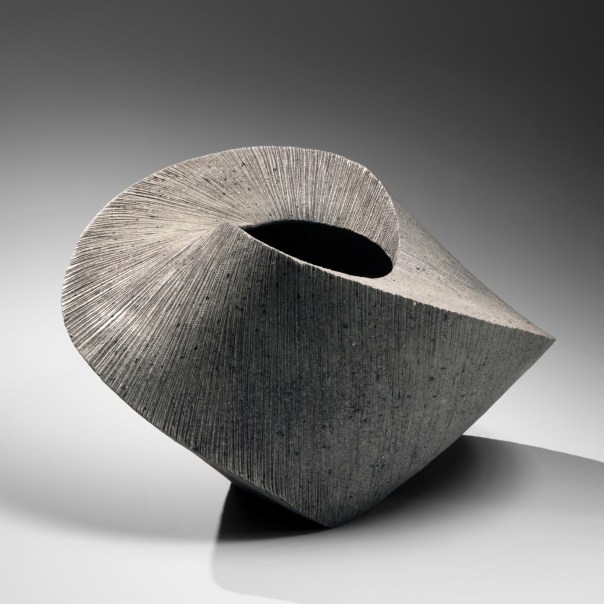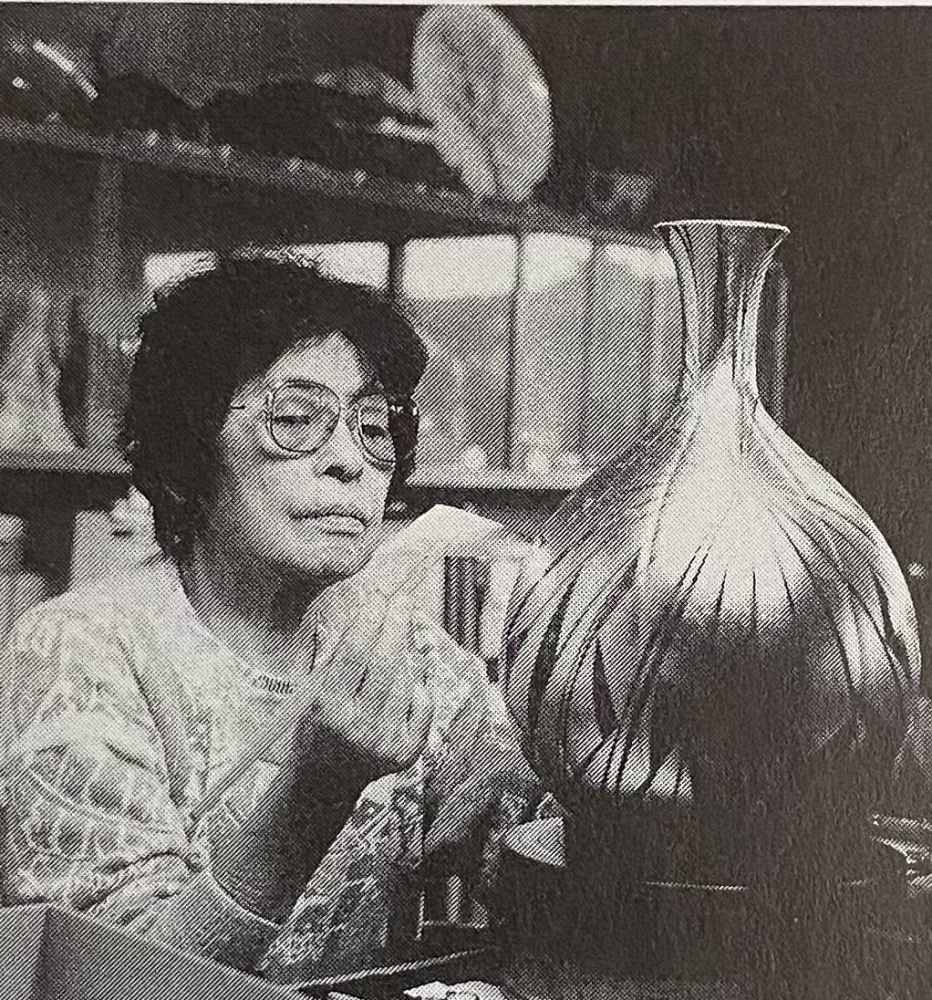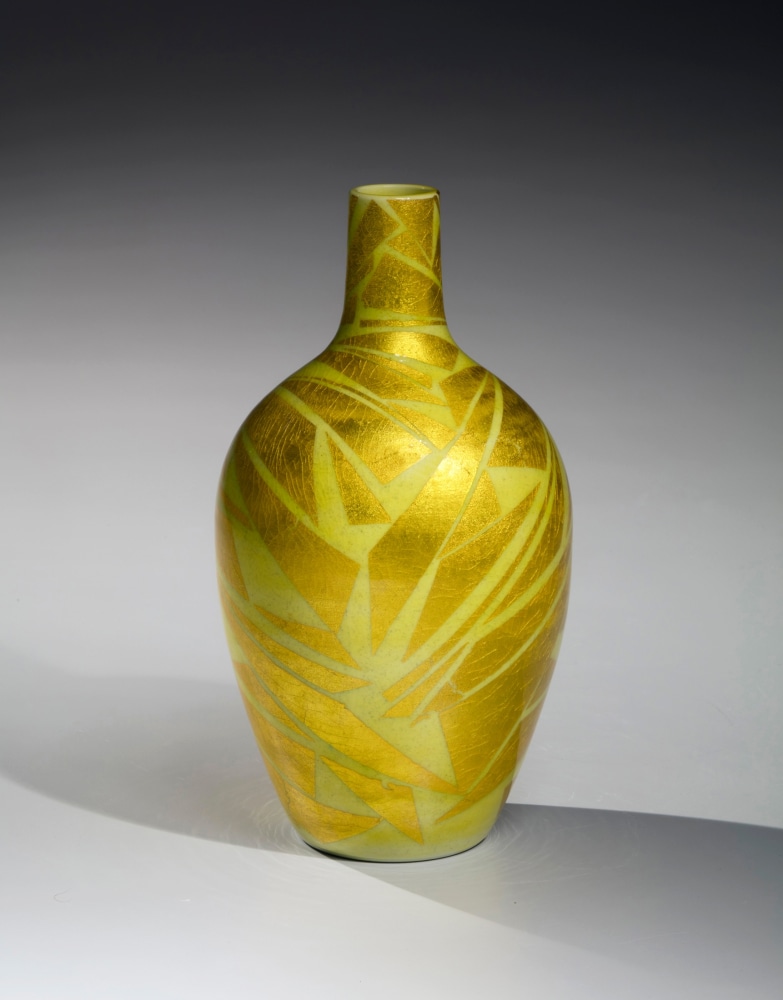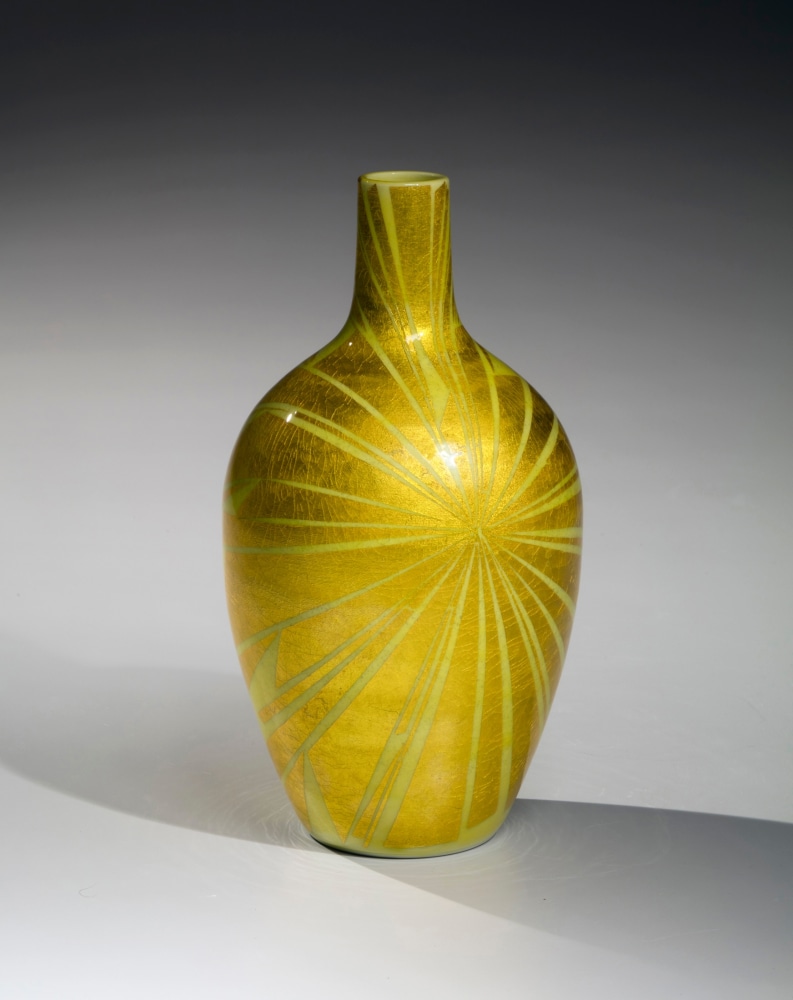

Photo: Kyūshū I (Vol. 9) Gendai no nihon tōgei (1989).

(1915-1996)
In the enormously male dominated world of clay, by 1980, ONO HAKUKO was only the second female ceramist to receive the prestigious Japan Ceramic Society Prize. She received this award for mastering the difficult yūri-kinsai (gold foil underglaze) technique that she learned from Living National Treasure Kato Hajimē (1900-1968), and then further refined according to her aesthetics.
The meticulous process of yūri-kinsai is time-consuming and begins with unglazed bisque firing, creating a bare surface upon which the design is sketched in cobalt. Then, the cut and incised gold leaf is applied to the clay body. A layer of clear or lightly colored enamel is applied to the body before the second firing. Next, a painted design is sometimes applied to the enameled surface and the vessel is fired for a third time at a very low temperature to prevent melting the metal foil. As a result of this careful process, Ono’s works reveal a marvelous depth of surface and delicate, detailed designs that are enhanced by their elegance of form and an occasionally carved surface. Her acceptance into the man’s world of clay at that time helped to pave the way for a future generation of talented women artists.

Selected Public Collections:
Art Gallery of New South Wales, Sydney, Australia
Auckland Museum, Auckland, New Zealand
Hamilton Gallery, Hamilton, Australia
The Guest House (Geihinkan), Tokyo, Japan
Samuel P. Harn Museum of Art, Gainesville, FL
Ministry of Foreign Affairs, Tokyo, Japan
Minneapolis Institute of Art, MN
Musée National des Arts asiatiques (Musée Guimet), Paris, France
Musée Tomo, Tokyo, Japan
National Museum of Modern Art, Tokyo, Japan
Nelson-Atkins Museum of Art, Kansas City, MO
Smith College Museum of Art, Northampton, MA
Tsurui Art Museum, Niigata, Japan